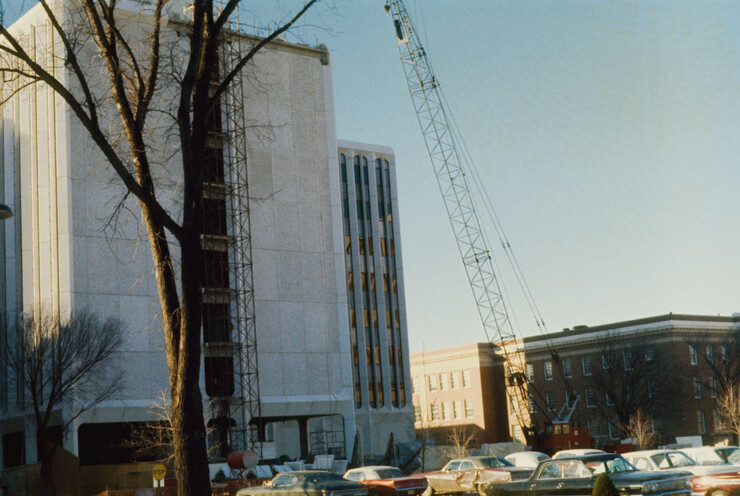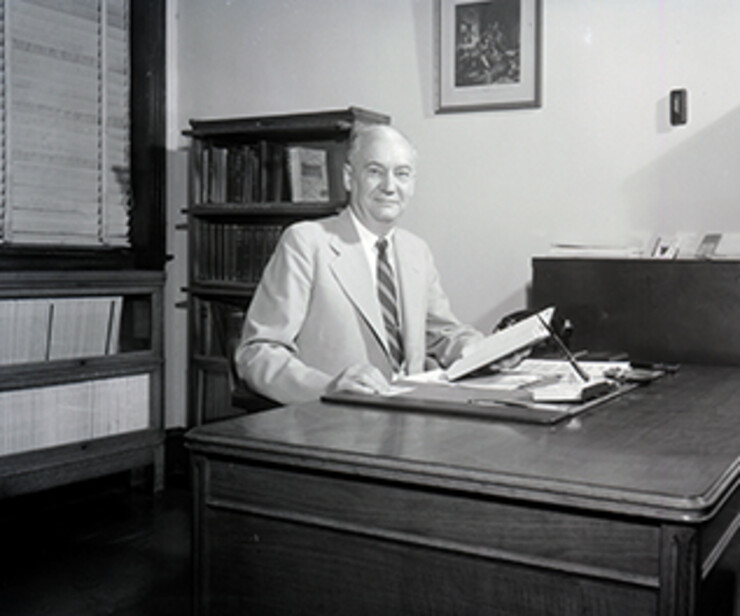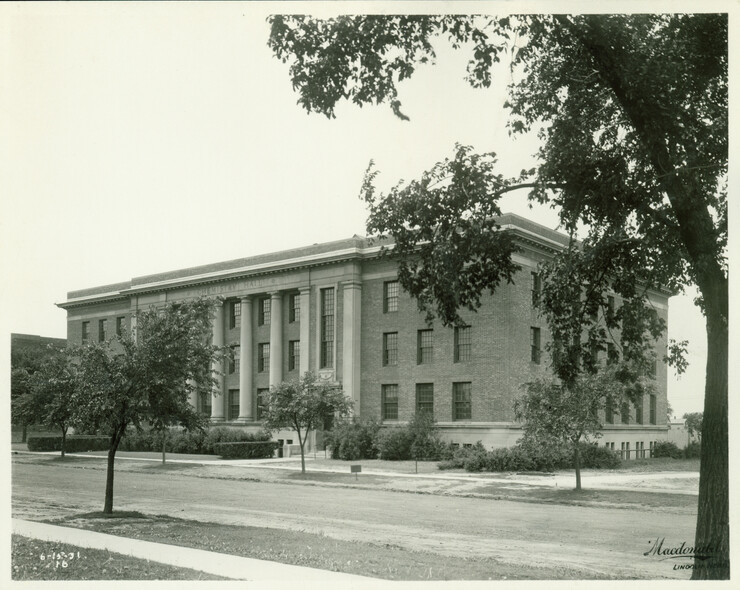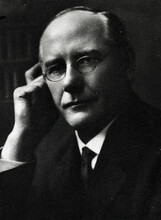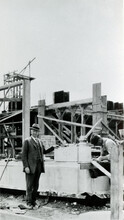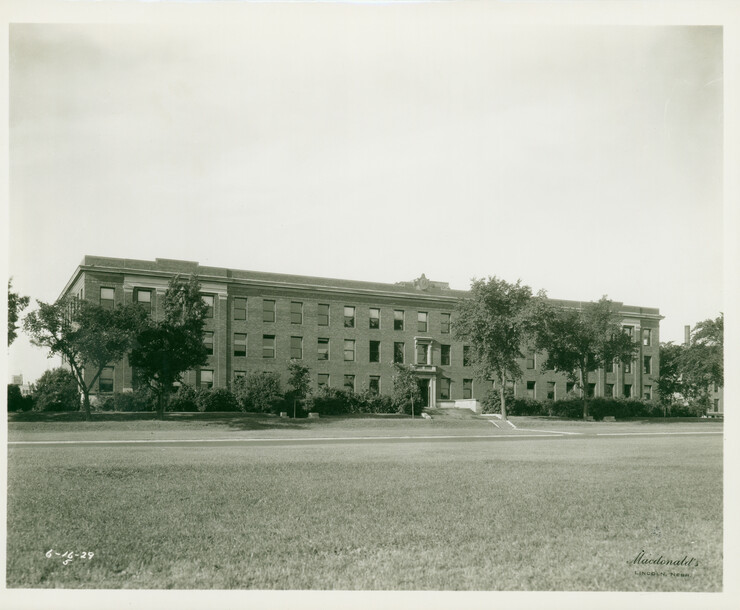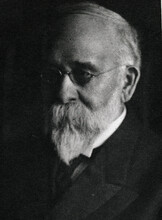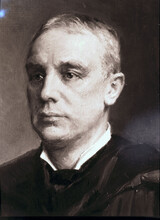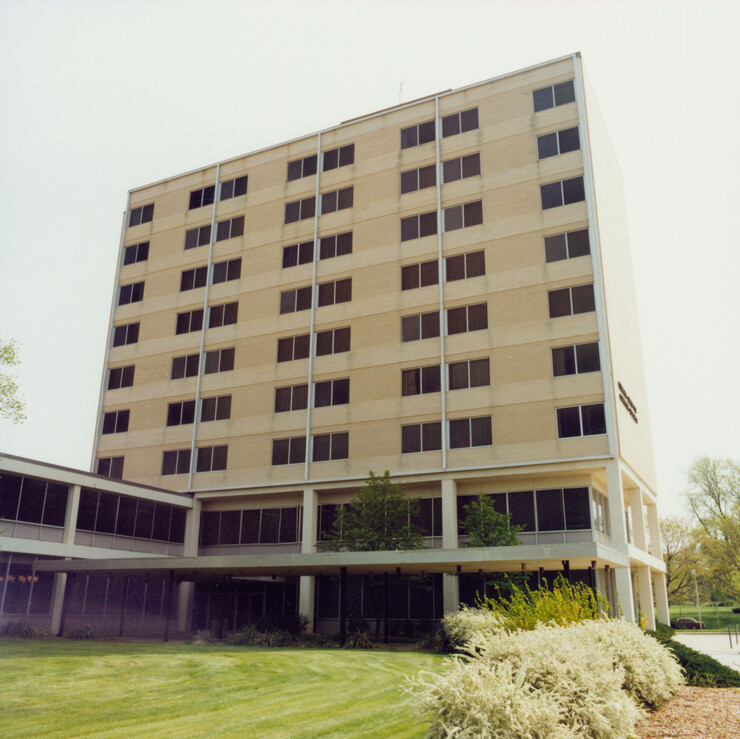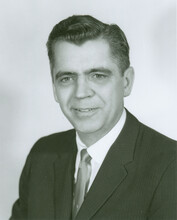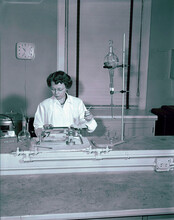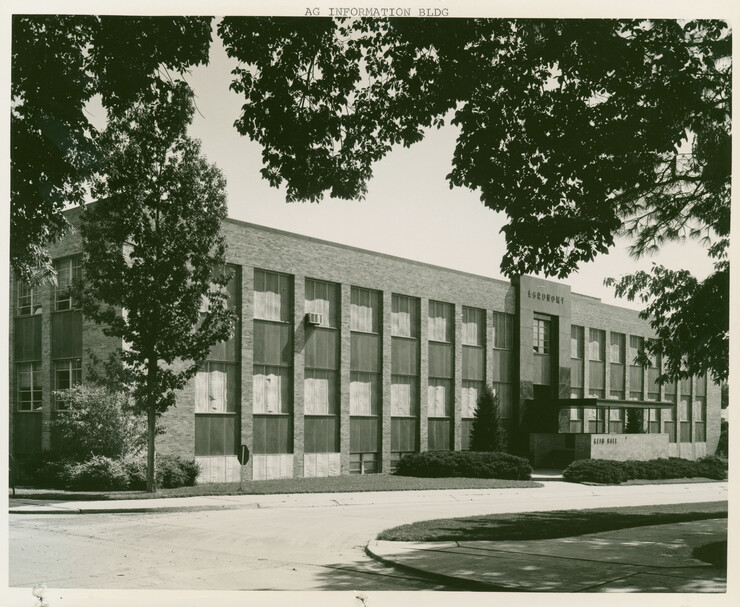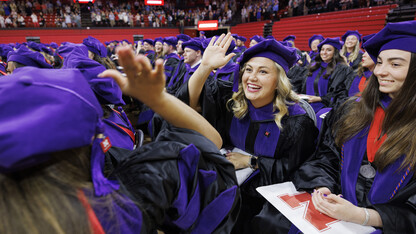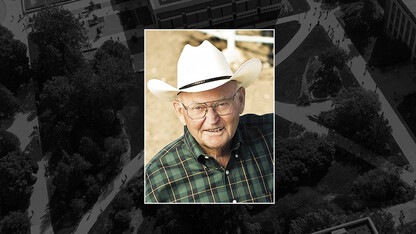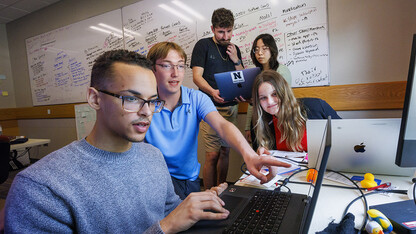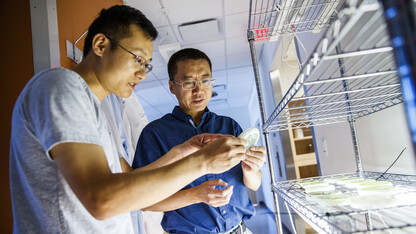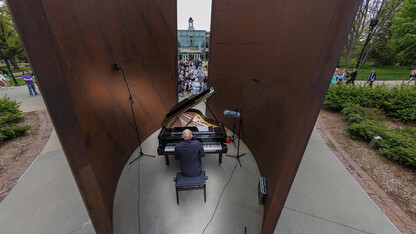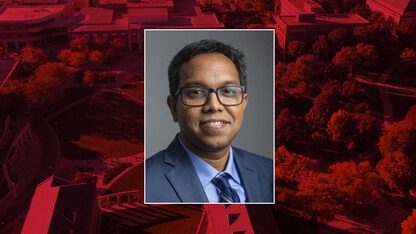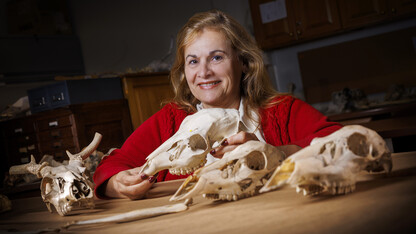· 8 min read
Campus buildings hold tales of Nebraska history
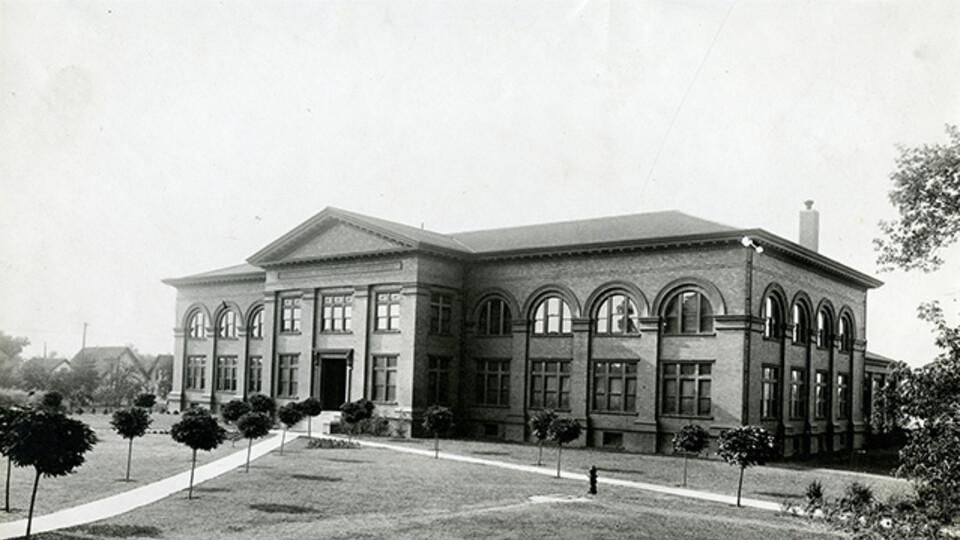
As fall rolls in and the temperatures begin to cool, it’s a great time for a stroll around the University of Nebraska–Lincoln campuses. And behind the brick and mortar are the stories of people who made their marks on the university.
Here are just a few of the people who left lasting legacies in Lincoln and are memorialized in the form of campus buildings.
City Campus
C.R. Richards
Starting at the corner of T Street and Stadium Drive across from South Stadium, a red brick building honors a Nebraska engineer.
Charles Russ Richards was the first dean of the College of Engineering from 1907 to 1911 and played a role in establishing the college as its own entity when the Industrial College was divided into the engineering and agriculture colleges.
Richards graduated from Purdue University in 1890 and taught at Cornell and Colorado Agricultural College, now Colorado State University, before joining the faculty at Nebraska in 1892. He was a professor and director of the School of Mechanic Arts from 1897 until he was appointed the first engineering dean.
Richards was the architect of the building that now shares his name.
He eventually became the president of Lehigh University in Pennsylvania. During his tenure there, he returned to Lincoln to speak at the dedication of Memorial Stadium in 1923. Richards Hall sits on the site of the old football field.
Cliff Hamilton
Crossing along South Stadium, the white high-rise of Hamilton Hall looms to the south.
Hamilton was a beloved professor of chemistry known as “Uncle Cliff” to students. He was born in 1889 in Blair and joined the chemistry faculty in 1929 after stints at Ohio Wesleyan, Wisconsin and Northwestern and a previous stop in Lincoln. He was chair of the chemistry department from 1939 to 1955.
Hamilton led a team that developed an antimalarial medication called Camoquin. He worked for the U.S. government in the Chemical Warfare Service during both world wars. Much of his work involved organic compounds of arsenic.
Some of Hamilton’s students once gifted him a Leica camera for use in birdwatching, one of his favorite hobbies.
Samuel Avery
North of Hamilton Hall and curving around the southeast corner of Memorial Stadium is Avery Hall.
Avery was connected to the university for more than 40 years, from his time as a student in the 1890s to being head of the chemistry department to serving as the university’s chancellor.
Avery moved to Crete as a child and later farmed with his family near Unadilla. He received his master’s degree from Nebraska in 1894 and then became a professor of agricultural chemistry. He was head of the chemistry department from 1905 to 1908, when he succeeded E. Benjamin Andrews as chancellor.
Andrews worked for the Chemical Warfare Service during World War I.
Avery resigned as chancellor in 1927 because of declining health but stayed on as chancellor emeritus and research professor of chemistry until his death in 1936.
One of Avery’s notable studies ended the labeling of bleached flours. Avery’s research determined bleaching had little to no effect on the nutritional value and therefore didn’t need to be labeled as bleached.
Edgar Burnett
Burnett Hall stands just to the east of Avery Hall.
Burnett was part of the university community for almost four decades, including 11 years as chancellor. Burnett was also the first dean of the College of Agriculture.
Burnett came to Lincoln in 1899 as a professor and head of the department of animal husbandry. He became the agriculture dean in 1909 and chancellor in 1928. He retired in 1938. As its leader during the 1930s, he had to guide the university through the financial struggles of the Great Depression and the agricultural struggles of the Dust Bowl. Burnett also founded the University of Nebraska Foundation in response to the strain of the Depression.
Charles Bessey
After going through the walkway between Burnett and Oldfather Halls, Bessey Hall is visible on the left.
Bessey was one of the most renowned botanists of his time. He studied botany at Michigan Agricultural College, now Michigan State University, and then taught at Iowa Agricultural College, now Iowa State.
He joined the faculty at Nebraska in 1884 as head of the botany department. Bessey was dean of the Industrial College from 1884 to 1888 and of the College of Literature, Science and the Arts from 1888 to 1891. He also served as acting chancellor twice. Bessey exponentially expanded the university’s collection of botanical specimens, which was then moved into the building that now bears his name.
The Nebraska National Forest was Bessey’s brainchild and the Bessey Unit of the forest near Halsey is named for him. He conceived the idea to see if trees could grow on the treeless plains of the region.
E. Benjamin Andrews
Continuing to the east leads to Andrews Hall.
Elisha Benjamin Andrews was chancellor from 1900 to 1908.
During Andrews’ time as leader of the university, enrollment nearly doubled and the athletic teams took on the name the Cornhuskers.
He grew up in the Northeast and spent much of his early life in that region, including studying and teaching at Cornell University and his alma mater, Brown University.
Andrews was also an officer in the Union Army during the Civil War and an ordained Baptist minister.
His main areas of study were history and political economics.
East Campus
Clifford Hardin
Near the corner of 33rd and Holdrege streets stands Hardin Hall.
Hardin was chancellor of the university for 14 years, from 1954 until 1968, when President Richard Nixon appointed him to his Cabinet as Secretary of Agriculture.
When he was named chancellor, he was the youngest chancellor in the university’s history at age 38. He received bachelor’s, master’s and doctorate degrees from Purdue and came to Nebraska from Michigan State, where he was dean of the School of Agriculture.
Enrollment at Nebraska quadrupled during his decade and a half as chancellor. Hardin was a key player in the creation of the University of Nebraska system, as he began talks to incorporate the University of Nebraska Omaha and the University of Nebraska Medical Center.
Hardin also hired Bob Devaney as the head football coach.
Hardin left the Nixon administration in 1971 and worked for Purina.
Ruth Leverton
Venturing deeper into campus to the north end of the East Campus Mall, Leverton Hall is on the left.
Leverton was a leader in the field of nutrition science and nutrition policy. She received a degree in home economics from Nebraska in 1928. She joined to teach in 1937 and became a professor in 1941.
She left in 1953 for a stop at Oklahoma Agricultural and Mechanical College, now Oklahoma State University, she worked for the U.S. Department of Agriculture in human nutrition research for more than 15 years.
Much of Leverton’s research involved women’s nutrition. She studied the effect of iron levels in women, crucial in treating iron-deficient anemia, and whether men and women have different needs for amino acids. She researched the dietary needs of college-age women using residents of Love Memorial Hall as subjects.
Franklin Keim
Past the Nebraska East Union is Keim Hall.
Keim was a leader in the agronomy department for decades. He joined the department in 1918 before ultimately becoming chair for 20 years from 1932 to 1952.
As chair, Keim grew the department into the largest in the College of Agriculture at the time.
Keim advocated for moving the agronomy department under one roof, from classrooms to labs to offices. This was achieved in the building now named for him, which was dedicated in 1957, a year after Keim’s death.
After World War II, Keim worked at Biarritz American University in France to teach American soldiers preparing to return home about plant genetics and agronomy.
